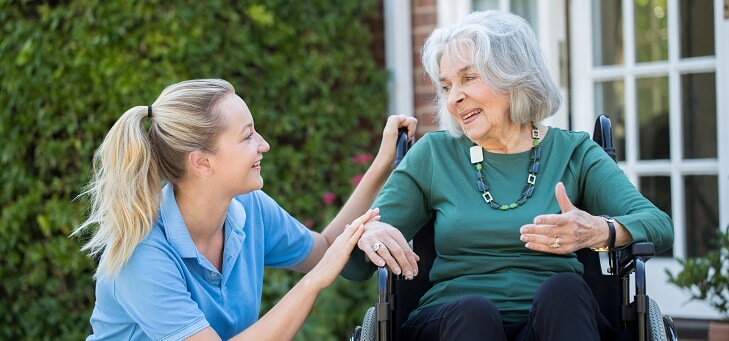It’s been a fortnight since the government released the findings of its two-year aged care royal commission.
While many were hoping the government would come out of the gate with guns blazing to fix the problem termed a ‘national disgrace’, it seems the big stumbling block is still funding.
It’s obvious ‘the fix’ requires funds. But one would hope the government had the solution to providing solvency by now.
Last week, we reported how taxpayers may have been most likely to foot the bill. That may still be the case, even with the government seemingly opposed to partly backflipping on its 2020 Budget centrepiece tax breaks.
No, now the onus to pay for aged care could be on you. Or it will if the chairman of the aged care review has his way.
Retirement Income Review chairman Mike Callaghan, chair of the Aged Care Financing Authority from 2018 to 2020, wants people to pay for their own aged care.
But he doesn’t want you to use your super to do it. That would be “inefficient”, Mr Callaghan says.
“The concept of putting aside part of your superannuation balance when you may not need it is like self-insuring for something you may not need,” he said.
“It is not a good way to handle these risks.
“It would be an inefficient insurance arrangement … when you only have a small proportion of people who need it.”
Mr Callaghan opposes a Liberal backbencher push to quarantine superannuation guarantee rises for aged care, claiming that, of the 1.2 million people who received aged care services in 2017/2018, only 7 per cent actually used residential aged care.
While he says the sector is failing older Australians “simply because there is not enough funding to meet the assessed need”, he’s not quite set on how to add to the $19 billion or so the government already spends on the sector.
Read more: Podcast: The critical aged care changes that simply can’t wait
The 1 per cent Medicare-style levy proposed by the aged care royal commission has its share of fans and foes – even the commissioners couldn’t decide on a single levy model.
Ross Gittins opined how Prime Minister Scott Morrison and Treasurer Josh Frydenberg had “little appetite” to use an “aged care improvement levy” of 1 per cent of taxable income to cover the cost of aged care reforms.
“Morrison wants to be seen as delivering lower – not higher – taxes,” wrote Mr Gittins.
“I suspect the pair have realised that announcing an increase in tax on all income earners wouldn’t fit well with the costly third stage of their tax cuts, due in 2024, which will go mainly to high income-earners (like my good self).
“Rather, the pair are murmuring about making the elderly contribute more from their own retirement savings towards the cost of their care by tightening the means-testing of aged care benefits. Maybe there’d be more and bigger ‘refundable accommodation deposits’.
“Making the better-off old cover more of their own costs – including by taking account of the much-increased value of their homes – would be very fair. Too fair, you’d have thought, for the Liberal Party and its heartland.”
Mr Callaghan says people “who can afford to pay should pay” and thinks means testing could be the answer.
“If you had a system where more people had to pay, you’d see insurance products being developed [in the market] to cover these costs,” he said.
He says means testing and using equity in the family home to help fund aged care could separate those who can’t afford to pay for aged care from those who can.
Read more: Aged care, death and taxes after the royal commission
Australian Council of Social Services (ACOSS) chief Dr Cassandra Goldie believes universal access to better aged care could be funded through the tax system, through a 15 per cent aged care levy on super fund income.
“This would fund a legislated aged care guarantee,” she said. “Like the Medicare levy for health, this would be a form of collective insurance for the care people will need in future.”
National Seniors Australia chief executive Professor John McCallum doesn’t want to disadvantage those on lower incomes. He’d like to see a scheme that taps into your home’s equity, but in the form of a home care loans scheme used in addition to existing care.
“I think it’s got a lot of virtues,” he said.
Australia currently spends half the amount on aged care, as a percentage of GDP, compared with other similar OECD countries – about 1.2 per cent, compared to 2.5 per cent.
“Given the level of funding required, we need to consider what would be the best mix between government funding and consumer contributions, including a levy, personal contributions, support for home equity release and payment through superannuation products such as annuities and longevity insurance,” said Pat Sparrow speaking on behalf of the Australian Aged Care Collaboration.
Read more: Paid on par with cleaners: the broader issue affecting aged care
In case you were wondering, the majority of Australians surveyed by the royal commission are okay with footing the bill for aged care reforms, with 61 per cent of taxpayers saying they were willing to pay more tax to fund aged care.
How do you think reforms should be funded? Are you happy to fund your own aged care? Or should there be a Medicare-style levy to fund universal aged care?
If you enjoy our content, don’t keep it to yourself. Share our free eNews with your friends and encourage them to sign up.

